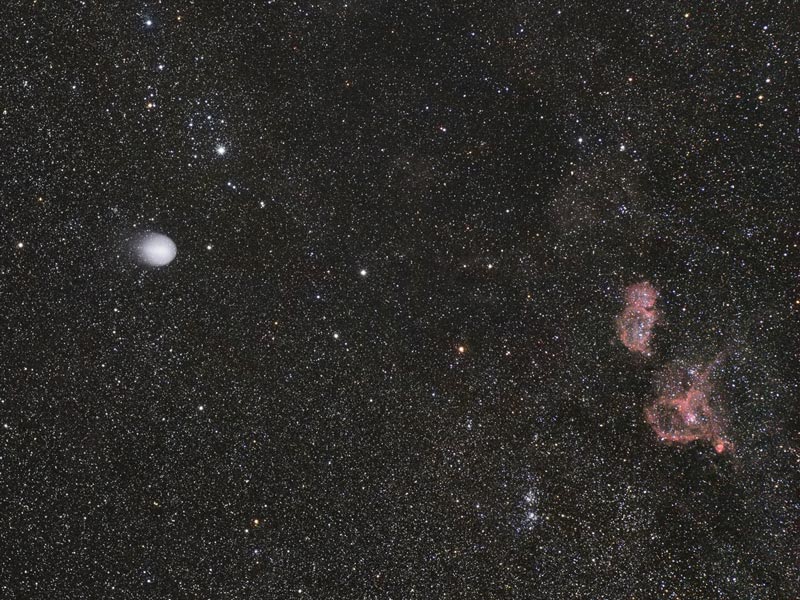
|
Credit & Copyright: Bob Nanz
(San Diego Astronomy Association)
Explanation:
Two spectacular comets graced Earth's skies during 2007.
Both comets became bright enough to be
seen by the unaided eye of the casual
sky enthusiast.
Early in 2007,
Comet McNaught grew brighter than
any comet in 40 years, displaying a
beautiful dust tail that flowed across the sky.
Comet McNaught (c/2006 P1) became known as the
Great Comet of 2007,
sported unusual striations in its expansive
dust tail,
and showed unexpectedly
complex chemistry in its
ion tail.
Toward the year's end, normally docile and faint
Comet Holmes
brightened suddenly and unexpectedly to naked eye visibility.
Remarkably,
Comet 17P/Holmes
stayed bright for weeks even though
it
lies beyond the orbit of Mars.
No distant
comet in recent history has remained so bright for so long.
In this view, a white
Comet Holmes was photographed in early December posing with the
Heart and Soul Nebulas.
APOD presents: Astronomy Pictures of the Year for 2007
|
January February March April May June July August September October November December |
| |||||||||||||||||||||||||||||||||||||||||||||||||||||||
NASA Web Site Statements, Warnings, and Disclaimers
NASA Official: Jay Norris. Specific rights apply.
A service of: LHEA at NASA / GSFC
& Michigan Tech. U.
Based on Astronomy Picture
Of the Day
Publications with keywords: comet - comet Holmes - Comet McNaught
Publications with words: comet - comet Holmes - Comet McNaught
See also:
- APOD: 2025 September 30 Á Comet Lemmon Brightens
- APOD: 2025 September 29 Á Two Camera Comets in One Sky
- APOD: 2025 September 26 Á A SWAN an ATLAS and Mars
- APOD: 2025 September 18 Á Comet C/2025 R2 SWAN
- APOD: 2025 September 16 Á New Comet SWAN25B over Mexico
- APOD: 2025 July 7 Á Interstellar Comet 3I ATLAS
- Comet C/2025 F2 SWAN
